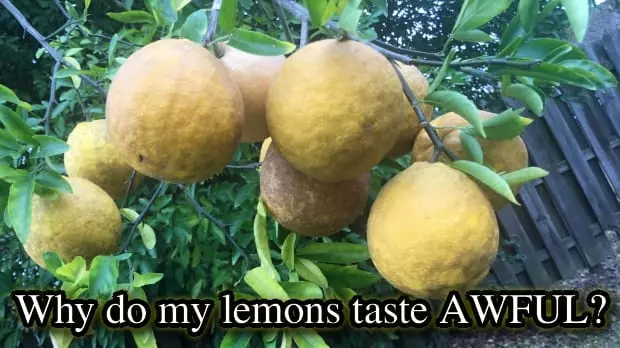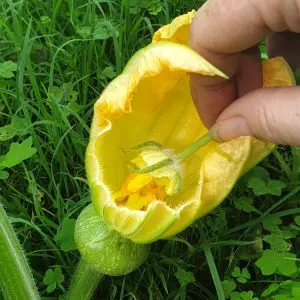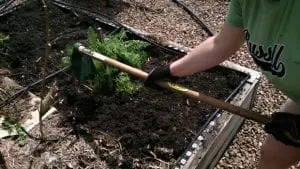The other day, I received an email from Nytasha asking me if I could help her find out what was wrong with her lemon tree…

Basically, Nytasha was puzzled by how bad the fruit (produced by her "seemingly healthy" lemon tree) tasted and if I had any experience or thoughts as to what was causing the problem. Nytasha inherited the mature tree when she moved into her property so she doesn't know the variety or the history of the lemon tree making it a harder mystery to solve.
I regularly get fruit and vegetable Q&A from our readers but often they don't include any images only a description of the issue, which sometimes isn't very helpful. Thankfully, Nytasha was able to provide me with more than enough information and I was so impressed with her perseverance in getting the information to me, for reaching out, and highlighting such an interesting topic, that I decided to write this article about it.
Main problems growing lemon trees
But before we discuss what I concluded to be the cause of the fruit tasting so terrible and what can be done about it, I would like to broadly cover some of the main problems lemon tree growers can face:
- Pests – Lemons, as we know, are part of the citrus family and therefore are susceptible to a range of common pests. Some eat the foliage, some bore into the stems, some eat the fruit, and others just suck the life out of the tree using various methods. Most pests are easily controlled organically; however, if they are left to grow in numbers and dominate the tree there can be dire consequences due to the stress in coping with pest attack including poor tasting fruit.
- Diseases – There are certain nasty diseases (let's include fungal also) that make growing lemons difficult in some parts of the world. Thankfully, lemon trees grow pretty well in most parts and the majority of the many diseases are manageable by simply taking care of the tree such as pruning, good drainage, and removing diseased fruit or branches. Generally, you can tell if your lemon tree is failing due to a serious disease because it will be dying and looking sick and of course this will affect the fruit. These days, simply typing the signs and symptoms into Google should allow you to find the exact problem within minutes, which is nearly always a fungal related problem simply managed through pruning. In extreme cases, a fungal spray may need to be applied but at least a fungicide is not as bad as a pesticide. If in the unfortunate case your tree contracts a serious problem like a bacterial disease such as citrus canker, then that's a different story and tree removal is usually the only solution. However, tree removal due to disease is an extreme case for the average backyard grower; usually, if the tree is managed correctly (which is pretty simple to do) major disease is not something to worry about.
- Deficiencies – Nutrient or mineral shortages can and will affect fruit production. Lemon trees evolved to grow in specific soil types a long time ago (in Asia) and although there are many different varieties of lemons (some that are not so ancient) the need for certain original nutrients and minerals/trace elements remains the same today as it was for wild lemons a 1000 years before. If a lemon tree is not getting adequate food, vitamins, and minerals then the fruit will probably not taste very good. Therefore, we need to be aware of our lemon tree needs and not only just fertilise the tree but also provide it with minerals and trace elements particularly if there are signs these are lacking in the spot where the tree is growing.
- Water – Underwatering or overwatering could be classed as a deficiency (as above) I suppose, but I think water deserves its own subheading because it's a vital part of growing lemon trees and producing good tasting fruit. Lemon trees do grow best when they are watered well and not allowed to become drought stressed especially during fruit production and in particular during the final phase of fruit swell/colour change as they ripen. It goes without saying if a lemon tree is water stressed whilst trying to produce fruit the final product will likely be bitter or dry and tasteless. On the other hand, if a lemon tree is watered too much and it's tender feeder roots close to the surface are sitting in stagnant water then it will also find it difficult to transfer sugars and nutrients to the fruit and this will have an effect on quality. It's easy to tell if a lemon tree is being under or over watered as both will cause similar symptoms such as wilting or leaf yellowing and simply by touching or observing the base of the tree will show if it needs more or less water.
Besides all these potential problems cited above, citrus is a very hardy tree to grow and they're a great specimen for the backyard fruit grower to have; in particular, lemon trees are probably the easiest to grow.
Lemons tend to suffer the cold better than other citrus and therefore have a broader climate range and one small tree is usually generous enough providing plenty of fruit for a standard sized family.
Back to our problem tree
So getting back to our specific problem lemon tree…
Firstly, looking at the tree overall it appears to be growing healthy. Yes, there's some yellowing of the leaves which may indicate a deficiency in magnesium or iron etc, but realistically I wouldn't consider this to be an extreme case of deficiency and certainly not bad enough to affect the flavour of the fruit.

Also, the fruit looks quite normal, although they do have signs of sooty mould (the black fungus covering the skin) or possibly lemon scab and these problems can also indicate a scale or aphid infestation as sooty mould and sucking pests go hand in hand. But again, I don't see an extreme case of pest and disease here and doubt it's the cause of the fruit tasting awful. In fact, sooty mould rarely affects fruit taste at all.

Therefore, on face value, the lemon tree is growing and producing well so why doesn't the fruit taste the way it should? Well, have a look at the next image below this paragraph and see if the problem is as obvious to you as it was to me…

Can you see it? The lemon tree has multiple trunks.
I would say with 99% certainty that this lemon tree has been taken over by its rootstock. Most lemon trees purchased from a good nursery are grafted, which means a small branch from a favourable variety of lemon is attached to the bottom half (rootstock) of another lemon or citrus tree usually grown from seed. The rootstock is selected for its vigorous growing and disease resistance qualities whereas the upper graft is selected for the fruit quality.
Because of its vigorous nature, it is common for the rootstock to bud and send out sucker growth from below the graft point on the tree. If these sucker growths are not removed they will suck the energy from the top graft and retard growth or even worse can totally overgrow and take over the whole tree.
The problem with the rootstock becoming the main plant and taking over is it may not bear fruit at all and if it does eventually bear fruit it's usually poor quality or inedible. This is what has happened with Nytasha's tree, I'm sorry to say.
Solving rootstock taking over lemon tree
What can be done to rectify the issue of the rootstock taking over the initial graft?
Firstly, prevention is better than cure and this can be easily done by removing new sucker growth below the graft point as early as possible. Removing sucker growth is particularly important for younger saplings and then once the tree matures it will cope better with sucker growth and it won't be as much of a problem.

An example of sucker growth below the graft on a citrus tree (image above)
Secondly, if the sucker growth has taken over the tree (or become the tree) you'll have to hunt for the original graft stem and then, if found, mark it before removing all the other rootstock branches leaving just the origional. You can usually tell the difference between rootstock growth and the original graft by the leaves and possibly the fruit. Rootstock growth will usually be more thorny than grafted stock and the leaves can sometimes be bigger. Also, if you can still determine the old grafting point on the stem then remove anything below it.
Finally, if the original graft stem can't be found and you really do want a good producing lemon tree, I would remove the overgrown rootstock tree altogether and replant a new one. In about 3-5 years, you'll have a new productive lemon tree with wonderful tasting fruit.
As you can see, Nytasha sent me several excellent photos and from the images themselves, I was able to ascertain with some confidence the "root" cause of the problem – pardon the pun…
I'd like to take this opportunity to thank Natasha for her question and allowing me to use her images in this article as I'm sure this information will be of interest to many of our readers! If anyone else would like to share their fruit or veg problem feel free to email me your question or join our forum Self Sufficient Culture and post it over there so we can all help to solve it.
Just to clarify, if it were me, I would remove the tree in this particular example completely and replace it with a Meyer lemon as this variety grows fast and produces tons of fruit (check out the video below).












